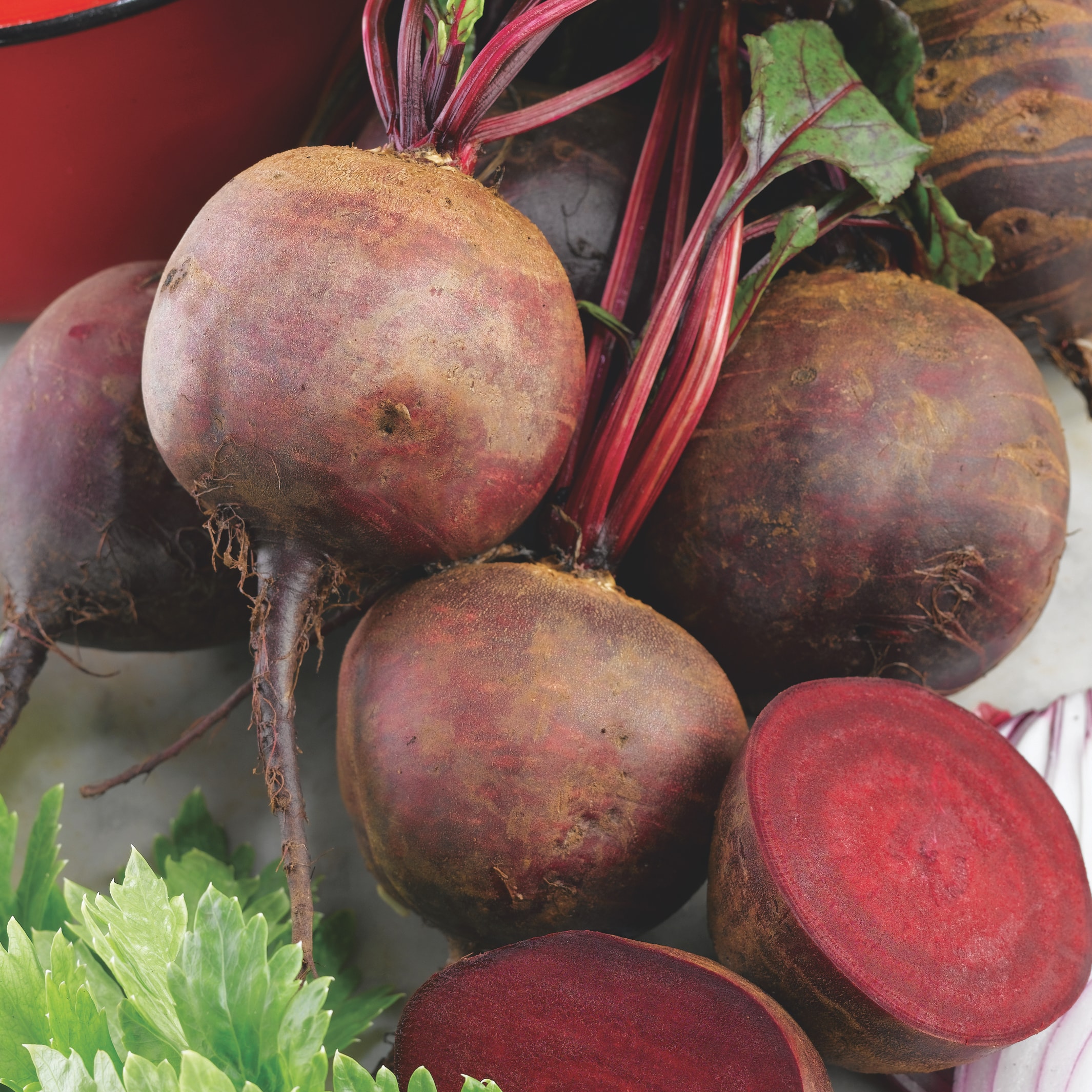What to do in your allotment in April
Written by Lee Senior
Easter came early in the spring calendar this year, giving an opportunity to make a good start on the many enjoyable spring tasks. Now that the land has started to dry out a little, I’ve taken the opportunity to plant my early seed potatoes and overwintered garlic. I’ve also been busy preparing some early seed sowing beds. These will be covered with black sheeting to help warm up the soil and catch a few slugs in the process!
April is an exciting month filled with the joy of watching things grow. I’m looking forward to seeing my asparagus crowns sprout into life, heralding the start of the cropping season for this spring delicacy! But I know that the weather is notoriously unpredictable at this time of year and wild temperature swings are not unusual. As ever, if conditions aren’t suitable, it’s always better to err on the side of caution. Nature invariably catches up, although admittedly at times it may not always feel like it!
Happy growing!
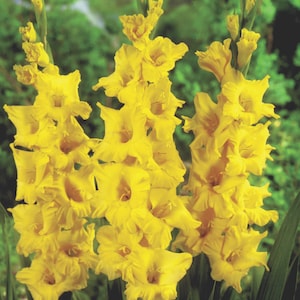
Image: Gladioli Limoncello
Allotment flowers in April
- This is a wonderful time of year if, like me, you grow a few flowers on your plot. Spring-flowering varieties of anemone look great in containers alongside daffodils. One of my favourites is Anemone ‘Mr Fokker’.
- The delightful native primrose, (primula vulgaris) is in bloom this month. I’ve grown this plant for years in quiet, semi-shady patches of my plot. The lightly scented yellow flowers attract lots of beneficial insects!
- The closely related native cowslip, (primula veris) is another underrated springtime stunner and is an even bigger favourite of mine. The bell shaped, yellow flowers have an addictive heady scent that is very noticeable on still days and evenings.
- A great ground covering plant that will hide an unkempt area and help suppress weeds is periwinkle (vinca minor, and vinca major). The violet blue flowers are attractive and provide colour in shady areas. One note of caution is that they can be invasive, so should be kept away from the main planting beds!
- There’s still time to sow half hardy and hardy bedding plant seeds early in the month. They can be sown in a cold greenhouse or, if the weather is still on the cold side, a heated propagator can be used. Protect the half hardy seedlings from frost with fleece.
- Harden off and plant out your autumn-sown sweet peas that you’ve grown under glass over winter, or sow sweet pea seeds directly into their final flowering position now.
- Plant gladioli corms in April. These summer-flowering bulbs make excellent cut stems so plant plenty of rows on the plot. Don’t forget to label where your bulbs are so that when the foliage dies you won’t inadvertently dig them up as I’ve done in the past!
- Move dahlia plants out this month, making sure they’re protected by horticultural fleece if there’s any risk of frost. They won’t tolerate below zero temperatures.
- Fill large containers with a wildflower seed mix to attract pollinators.
Allotment vegetables in April
- April is a key month in the potato calendar. I try to plant out early varieties at the start of the month and then second early or maincrop 2-3 weeks later. Hold off if the ground is cold and wet – the plants will catch up. Keep a roll of frost-protection fleece on standby as the tops are very susceptible to frost and can be wiped out overnight. If the tops do get frosted, new growth will come but it will set the plants back by 2-3 weeks.
- I’m also hardening off my trays of indoor grown onions and shallots. I’ll plant them in a prepared weed-free bed and cover them with cloches or fleece if the weather turns inclement. If you buy onion and shallot sets, plant them outdoors in well-spaced rows.
- I’m a big fan of asparagus! Over the years I’ve grown asparagus crowns but recently I’ve had success with seed too. It’s a very cost-effective option. The variety ‘F1 Ariane’ is easy to grow and can be germinated in the normal way in the greenhouse. Keep an eye out for any early spears forming and provide slug protection as required.
- Most vegetable seeds can be sown this month. Tender crops like courgettes, outdoor cucumbers and beans should all be started in the greenhouse. One of my favourites is Runner Bean ‘Scarlet Emperor’ which I’ve grown for thirty years. I also sow Climbing French Bean ‘Cobra’ and ‘Blue Lake’ seeds.
- Parsnips should be sown directly as soon as soil conditions allow. Use cloches as the seeds need a fairly constant temperature to germinate (can take up to four weeks). ‘F1 Gladiator’ has good resistance to canker and an RHS Award of Garden Merit.
- Along with the winter parsnips, sow other winter crops like kale, cabbage and broccoli ready for harvests at the end of the year.
- Brussels Sprout seeds should be sown early in the month under glass. It’s essential to provide shade for the seedlings, and don’t expose them to heat or they will become stunted
- Sow marrows, courgettes, pumpkins, squashes and tomato seeds in a heated greenhouse or propagator. Give priority to crops like sweet corn and squash which require a long season to give their best.
- If you’re growing tomatoes in the greenhouse, you should start to see flowers developing on the first truss. Remember to keep the plants protected from frosts at night and also to ventilate the greenhouse in the day as temperatures can get surprisingly high.
- Strong young lettuce plants can be planted outside now once they reach a good size. Protect from slugs and keep the plants well watered.
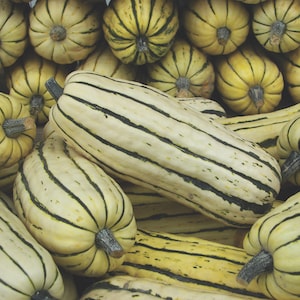
Image: Squash Seeds – Honeyboat
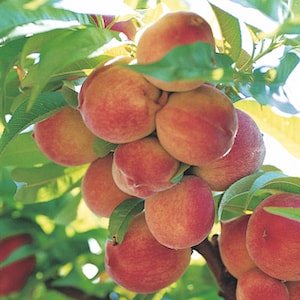
Image: Peach Avalon Pride
Allotment fruit in April
- Joyously, it’s apple blossom time in many parts of the UK. There’s no finer sight in spring than the attractive pink and white blossom of these venerable apple trees. Do protect from any severe frosts using fleece if the weather turns wintery.
- Pear trees, plum trees and cherry trees should also start flowering in April. If you’re growing dwarf varieties or have trees in a container, covering the blossom with fleece to protect it from frost is a good idea.
- Mulch around your fruit trees with well-rotted manure or straw mulch.
- Check for damage in your tree ties. Replace any that have snapped or re-tie to prevent damage to the trunk or the roots from too much movement.
- Traditional fig trees are very vigorous and should be planted in containers to restrict the roots and encourage cropping. Ultra-reliable is ‘Brown Turkey’ which grows well in a sunny location. Ironically, I grow two trees in rather poor, shallow soil, on my allotment. This has the effect of restricting vigour and the trees crop well most years.
- For a dwarf fig tree, consider ‘Little Miss Figgy’. Suitable for patio containers, it can provide two crops per year, in spring and autumn.
- Give your strawberry plants attention this month. Remove dead foliage to improve airflow, feed strawberry beds with a slow release balanced organic fertilizer, and use Fyba Mulch Mats to protect the fruit from soil splashes. Cover the plants with cloches to speed up flowering and fruiting.
- Continue to crop rhubarb plants. If any flower spikes appear in the middle, remove them as soon as possible to stop them stealing food and energy from the plant. Harvest your forced early rhubarb this month when the stems are roughly 25cm in length.
Crops to harvest in April
- As kale, leeks, parsnips, winter cabbage and sprouts reach the end of their season, we’re heading towards the ‘hungry gap’. But there are still some real treats. Purple-sprouting broccoli is cropping heavily this month.
- I’ve just harvested a tub of overwintered finger carrots. They’d been in a pot of multi-purpose compost for seven months but survived well. Try Carrot ‘Amsterdam Forcing 3’.
- Look out for the first few asparagus spears as they begin to appear. This is an April delicacy to be picked and enjoyed as fresh as possible. Keep an avid eye out for slugs before they get to your hard earned crop. Try using a slug trap if they become too much of a nuisance.
- I’m harvesting radishes, winter lettuce and spring onions this month too.
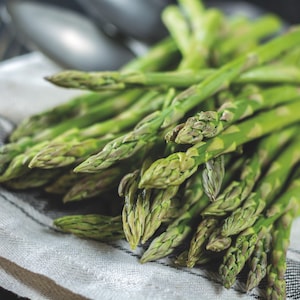
Image: Asparagus Plant – Gijnlim
General April allotment jobs
- Dig over your beds of green manure in April. Work the plants into the soil, making sure they’re well chopped up.
- Keep your eyes out for weeds. They’ll compete with your young plants for water and need to be removed.
- Now’s the time to prepare the land for your runner beans. Create a trench filled with garden compost, leafmould or well rotted organic matter. This will help retain vital moisture that the beans need to give their best during summer.
- Slugs and snails emerge this month as temperatures rise. Put measures into place to keep them off your precious plants.
- Keep an eye on greenhouse temperatures this month. Nights can still dip below freezing while day time temperatures can get quite warm.
- Stay on top of greenhouse watering. Seedlings shouldn’t be allowed to dry out and wilt.
- Clear out any winter crops that are over, like the stems of Brussels sprouts and the tip foliage of Jerusalem artichokes, digging up and eating the edible roots as you go. Don’t add any diseased foliage to the compost bin. Burn it or add it to your household waste instead.
- If you find seed sowing tricky or time consuming, have a go with seed tape. These biodegradable tapes come with the seeds pre-spaced at the optimal distance apart. Our carrot seed tape has been prepared to produce successional crops from August to January, so there’s no need for repeat sowing!
Planning ahead
- Make sure you’ve got all the vegetable seeds you need to make successional sowings of spinach, leaf mixes and rocket.
- Keep an eye on compost levels in the potting shed this month, and order in any seed sowing supplies that you may run short of in May. Next month is a busy one at the allotment in terms of getting plants into the ground!
Suttons Seeds recommend these areas which may also be of interest.
- Previous month: What to do in your allotment in March
- Next month: What to do in your allotment in May


